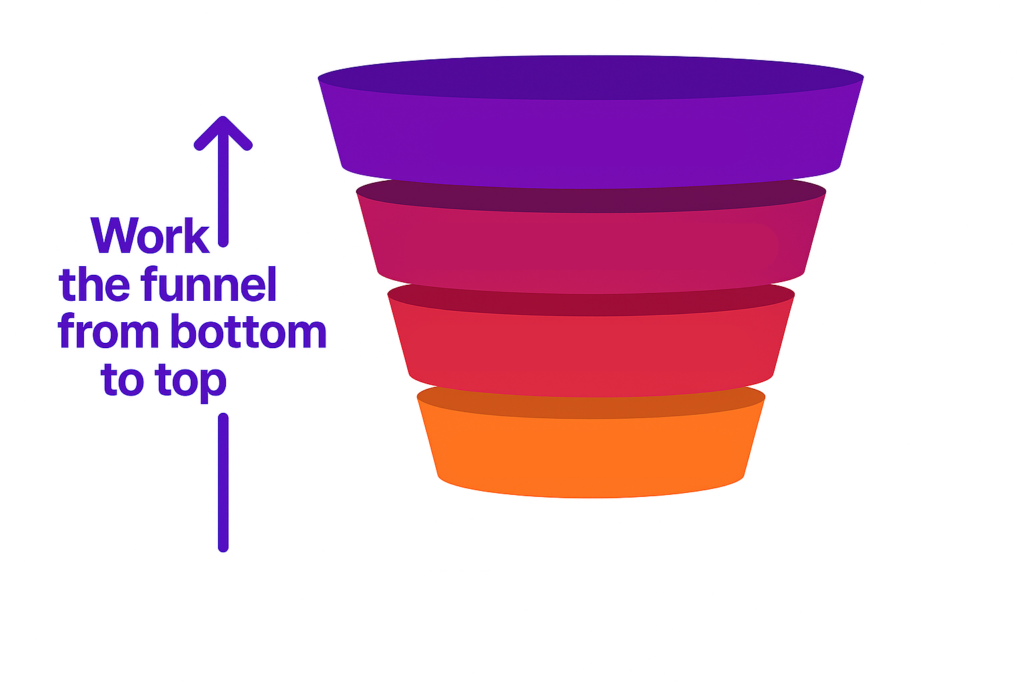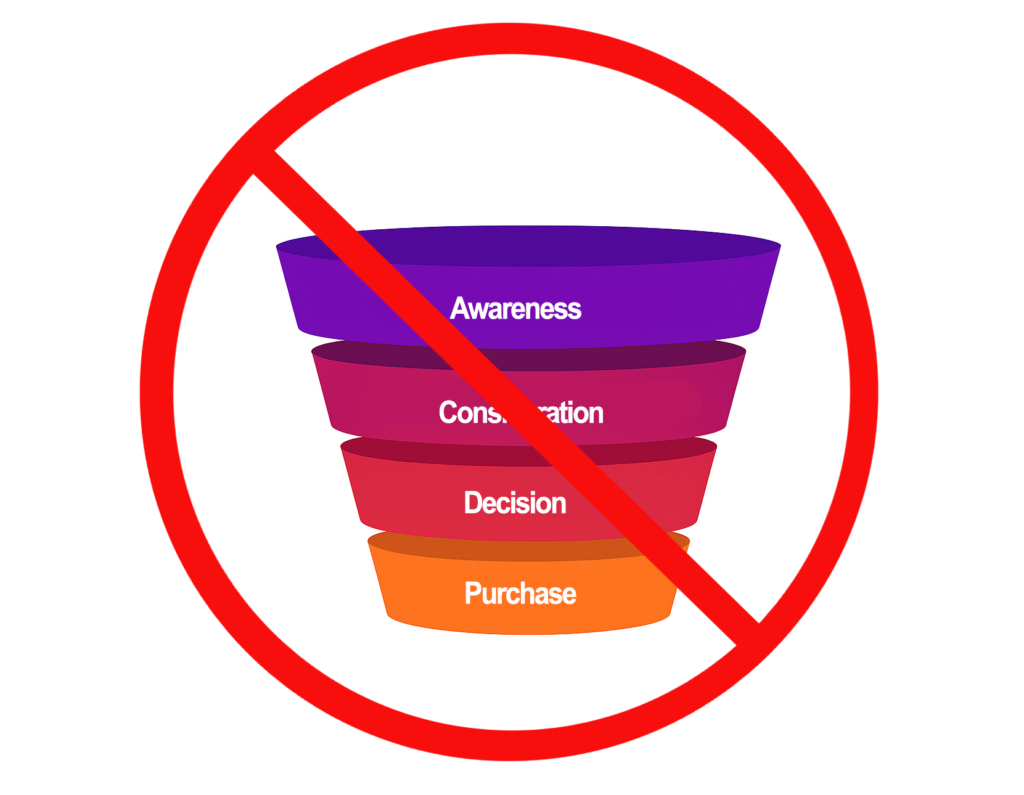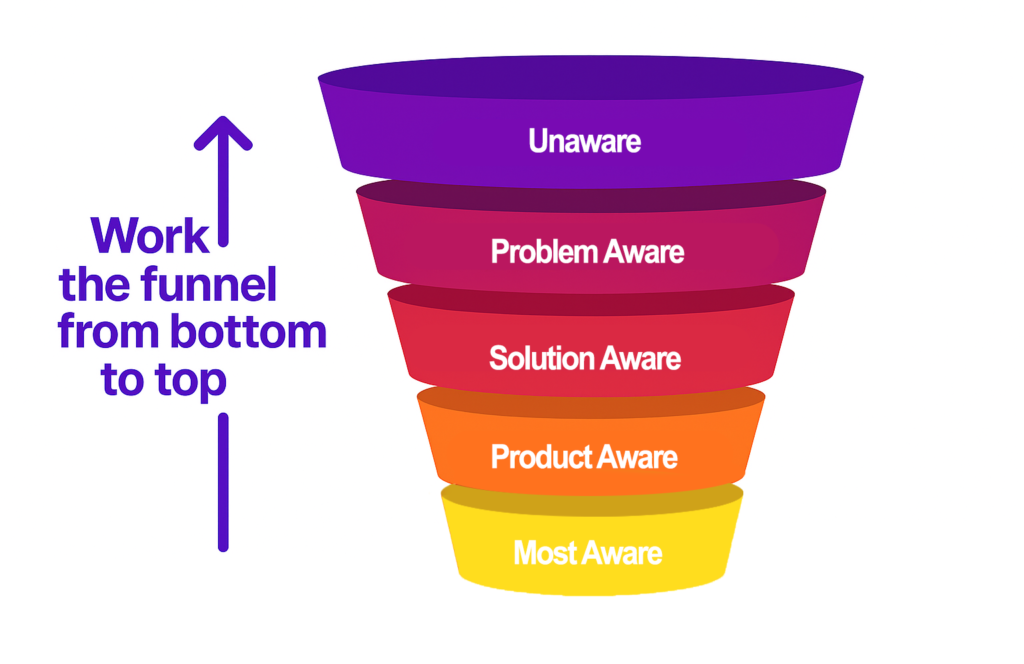B2B software as a service (SaaS) marketing is the most competitive marketing space that exists. With large deal sizes and high gross margins, B2B technology companies can afford to fuel big ad spends and pay top of market for top talent.
If marketing were a sport, then performing well in B2B SaaS would be Formula 1. And just like Formula 1, to win, you need the right strategy.
The Right SaaS Marketing Strategy
The internet is full of influencers telling you what the right SaaS marketing strategy is.
You’ll see LinkedIn posts pushing thought leadership on LinkedIn and Twitter as the golden road to lower CAC and long-term growth. Some people will tell you paid search is a huge win for them. Others will say it’s a dumpster fire of wasted cash. Some swear by SEO. Others claim SEO is dead.
Then of course, you’ve got outbound — the channel SaaS has leaned on heavily for the past ten years. Some will say outbound is the best way to start and scale. Others will tell you it’s a story of diminishing returns and burned-out BDRs.
The truth? None of these are strategies. They are all tactics. And any of them might work — or not — depending on your business.
What you need is a real framework that tells you what to do and when to do it.
The framework we’ve found works best is a reverse funnel strategy.
What is a Reverse Funnel Strategy?

A reverse funnel strategy takes the typical marketing funnel, which says a marketer needs to generate awareness, drive consideration, and influence action in that order, and flips it on its head. Instead of starting with awareness, you focus first on people who are already ready to take action, then work your way up.
Benefits of a reverse funnel strategy:
- You get results faster
- You spend your budget more efficiently
- You fix the bottom of the funnel problems first, which makes top of the funnel marketing more effective later.
But there is a problem with most reverse funnel strategies. They rely on the traditional marketing funnel, which often leads to misplaced marketing spend and content that does not match what prospects need to hear to move them closer to becoming a client.
The Traditional Marketing Funnel Misses The Point

But there is a problem with most reverse funnel strategies. They rely on the traditional marketing funnel, which often leads to misplaced marketing spend and content that does not match what prospects need to hear to move them closer to becoming a client.
It only focuses on where buyers are in your process, not theirs.
Because of that, a lot of marketers miss the real reason someone doesn’t convert. The buyer or the market just isn’t ready.
Not every buyer starts with the same level of understanding of the problem, the solution, or your product.
And if your message doesn’t match where they are in that journey, it won’t land.
So if the traditional funnel falls short, what should you use instead?
The solution is a different kind of funnel. Or actually, an old one. It was developed in the 1960s by a copywriter named Eugene Schwartz and introduced in his breakthrough book Breakthrough Advertising.
The Marketing Funnel You Should Be Using
In Breakthrough Advertising, Eugene Schwartz lays the groundwork for a marketing funnel based on buyer awareness, not marketing objectives. Only after understanding your market’s level of awareness should you define what your marketing objectives are.
The Eugene Schwartz model gives us five levels of awareness:
- Unaware – The prospect doesn’t know they have a problem.
- Problem aware – The prospect knows they have a problem but isn’t sure how to solve it.
- Product aware – The prospect knows about your product but isn’t convinced it’s the right choice.
- Most aware – The prospect knows about your product, knows they want it, and just hasn’t gotten around to buying it yet.
Now let’s take that same idea of reversing the funnel and see where it takes us — working the buyer awareness funnel from bottom (most aware) to top (unaware).

Convert The Most Aware Prospects
We’re going to start by focusing on converting prospects who are most aware.
For a B2B SaaS business, this might be someone who has visited your website multiple times or even requested more information but hasn’t yet converted to a closed won deal.
Why start here? Because if we can’t convert the people already showing strong interest, it doesn’t matter how good the rest of our marketing is.
Top strategies:
- Improve follow-up times: Improve MQL follow-up times for prospects in the most aware segment who have requested more info but haven’t purchased. Speed increases your chances of turning that interest into revenue.
- Enable better sales conversations: Give your sales team granular insights into what prospects are engaging with on your website and on third party platforms. Use that data to guide smarter outreach.
- Use predictive AI: Identify accounts and prospects likely to buy and have an Account Executive follow up with a light touch to start a conversation.
- Personalize your website: Show special offers or targeted messaging based on what the prospect has already interacted with.
Win Over Product-Aware Buyers
Next, we are going to focus on prospects who are product aware, meaning they know about your product but are still researching its features and benefits.
These prospects have visited your website once or twice, are doing research on your product on Google, and are reading articles about your brand on media and review websites. They are not completely sold yet and do not fully understand what separates you from the competition.
Top strategies:
- Use predictive analytics: Identify accounts that fall into this stage and target them with display ads and LinkedIn campaigns. With ABM platforms like Demandbase, a product aware funnel stage can be added. With tools like 6sense, these buyers would fall into the consideration stage of their funnel.
- Make your website clear and competitive: Make sure your website is clear, easy to understand, and shows exactly what you are selling and why you are different.
- Personalize the homepage: Personalize your homepage based on the buyer persona visiting your site to increase engagement and conversion.
- Rank for branded search terms: Make sure you are showing up on Google Organic Search for your branded product names. Catch the balls you are passing to yourself with top of funnel campaigns.
- Defend your brand in paid search: If competitors are bidding on your brand name, run paid search campaigns targeting your branded keywords to protect your prospects from being influenced by competitors. Do not allow interceptions.
- Enhance software review profiles: Collect more positive client reviews on sites like Capterra and G2 to strengthen your brand credibility.
- Run retargeting campaigns: Retarget prospects who have already visited your website with testimonials and case studies that match their specific ICP. For example, show manufacturing companies a case study about how you helped another manufacturing business grow revenue.
Stand Out Among Competing Solutions
Markets where most buyers are solution aware are mature markets, meaning there is a lot of competition.
For SaaS, think about categories like Customer Relationship Management (CRM) software or appointment scheduling software. People already know these types of solutions exist, but they might not know about your product.
These prospects are actively researching specific solutions, searching Google, reading review sites like G2, Capterra, GetApp, and more. They are not only looking for a solution, they are trying to find the best one.
Your job as a marketer is to make them product aware and show them why your solution stands out.
This is where paid search, SEO, and AEO (answer engine optimization) are king.
Top strategies:
- Run paid search campaigns targeting category keywords: Launch campaigns focused on keywords related to the product categories your SaaS fits into.
- Build SEO pages for product category searches: Create landing pages that rank for the product category names you fit into, or for more specific searches like appointment scheduling software for lawyers.
- Build SEO pages for product category searches: Create landing pages that rank for the product category names you fit into, or for more specific searches like appointment scheduling software for lawyers.
- Develop AEO optimized content: Create content designed to be picked up by ChatGPT, Google Gemini, and Google’s AI overviews to show up in answer engines.
- Run PPC and PPL ads on Gartner digital properties: Target buyers already searching for solutions in your category through Gartner’s advertising network.
- Improve your G2 rankings: Focus on getting more positive reviews and climbing higher in your product category grid, like patient engagement software.
Show Problem-Aware Buyers There’s A Better Way
Sometimes buyers know right away the solution they want to solve a problem they have, and sometimes they do not. Sometimes a buyer’s journey starts with a problem they know they have. These buyers are problem aware.
The prospect might be googling questions like “how to decrease no show rates” or “how to increase revenue,” or asking ChatGPT or Google Gemini for advice.
These same buyers are also scrolling through social media, looking for influencers who are talking about their problem. Because of how social media algorithms work, they are being served content related to their pain points. Across search engines, social media, and chatbots, what this group of your target market is doing is looking for a solution. You need to make sure your business shows up in the conversation.
Top strategies:
- Influencer marketing: The best way to target a market that is largely problem aware is through influencer marketing, also called thought leadership. You have two paths. You can develop your own thought leader or you can sponsor existing influencers.
- Develop your own thought leader: Between developing and sponsoring, growing your own thought leader will deliver better long-term ROI. If you can demonstrate you understand the prospect’s problem, they will assume you know the solution. When someone inside your company demonstrates a deep understanding of your market’s pain points, it positions your business as the natural choice. Building an internal thought leader takes time and may require winning executive support, but if you can present a clear case, it will help you build a moat that competitors cannot easily cross.
- Sponsor an influencer: If you do not have an internal candidate with the credibility or backstory to become a thought leader, you can sponsor an existing influencer who already has the trust of your market.
- Run paid social campaigns: Launch video and display ads that show your target ICP you understand their problem and hint at how your product solves it.
- Create SEO and AEO content for problem searches: Write articles designed to rank on Google and show up in answer engines when buyers are researching their pain points.
- Attend industry events: Show up at tradeshows and conferences where your target ICP and personas are gathering to talk about their challenges and learn about new solutions.
Spark Desire In Unaware Buyers
Some buyers are not looking for a solution because they do not know there is a problem. They are not Googling anything. They are not asking ChatGPT. They have accepted the pain as normal, whether that is manual work, inefficiency, or missed opportunity. It is the way it is.
Think CD cases before the iPod. People just lived with the status quo.
This group does not need a pitch. They need a shift in perspective to let them know what is possible and why that shift matters.
Top strategies:
- In-house thought leadership: Targeted thought leadership that first seeks to connect with people in your target market around a problem they know they have, and then links it to the bigger problem your product solves.
- Excellent advertising: Clear advertising that gets people excited about a solution to a problem they did not realize they had. Think iPod’s “1000 songs in your pocket.” Imagine seeing this in a world where everyone was still carrying around CD cases. This strategy is called excellent advertising because just running an ad like “carry around fewer CDs” probably would not have landed.
If you are looking for rapid growth, you should be investing in both thought leadership and excellent advertising. That is what Apple did. As more people become aware of the problem you solve and the solution you offer, competition will enter your space and how you go to market will change.
But if you are truly solving a problem people did not realize they could solve, what you need is scroll stopping ads and thought leadership.
Final Thoughts On B2B SaaS Marketing Strategy
Remember to work the marketing funnel from bottom to top
You always want to work the funnel from the bottom to the top. Make sure you have the bottom of the funnel fully sorted out before you invest heavily in top of funnel marketing. This will prevent wasted spend and effort on top of funnel campaigns that could have been successful but failed because the bottom of the funnel was not properly set up, like if you lacked a strong remarketing strategy or had unaddressed issues in your lead follow-up process.
Understand that buyer journeys are not linear
The order of operations for a prospective buyer is not always unaware to problem aware to solution aware to product aware to most aware. People can jump stages. A buyer can go from unaware to product aware in a single moment. In fact, if you are entering a market that is largely unaware, like Steve Jobs did in 2001, that is exactly what will happen.
You do not need to address every stage of the funnel
Your marketing plan does not need to cover every stage. There are many great businesses that drive revenue from solution aware marketing alone, using channels like paid search. On the other hand, if you identify that ninety percent of your buyers are problem aware, a solution focused marketing plan probably will not make sense. Instead, you can drop things like paid search and get really good at influencer marketing, which will help your dollars go further.
Do not assume your market is unaware just because you have a novel solution
Most prospects, even if they have not seen a solution like yours before, will still be aware they have a problem. Many SaaS founders, once they learn about the five stages of buyer awareness, jump straight to the idea that their market is “unaware.”
A good rule of thumb is this: if you can find statistics about the problem your business is solving, your market is likely problem aware. If there are no data points or reports quantifying the issue, you might be dealing with a truly unaware market.
Marketing is not sales
One of the biggest mistakes SaaS companies make is treating marketing like sales. This usually happens because founders often have more experience in sales, either from past roles or from selling their own product. But marketing is different. It’s a mix of data, psychology, creativity, and systems thinking. In many ways, it’s closer to engineering than it is to sales.
When companies treat marketing like sales, they expect immediate results, focus too heavily on bottom-funnel tactics, and underinvest in long-term brand and demand creation. This leads to inconsistent pipeline, messaging that doesn’t resonate, and a marketing team that’s judged by the wrong metrics. As a result, companies treating marketing like sales often miss both their marketing and sales numbers.
If you’re a non-marketing SaaS executive, here’s what to focus on to win at marketing:
If you’re a SaaS executive, your job isn’t to master marketing. It’s to hire someone who has.
The right marketing leader will build the team, find the right agencies, and know where to invest. The right person depends on the size, stage, and goals of your company. Here’s how to spot them:
- Do they have a clear framework (like the one outlined on this page) to guide media investments?
- Have they connected marketing to real business results and can they explain how?
Can they point to wins from past roles?





